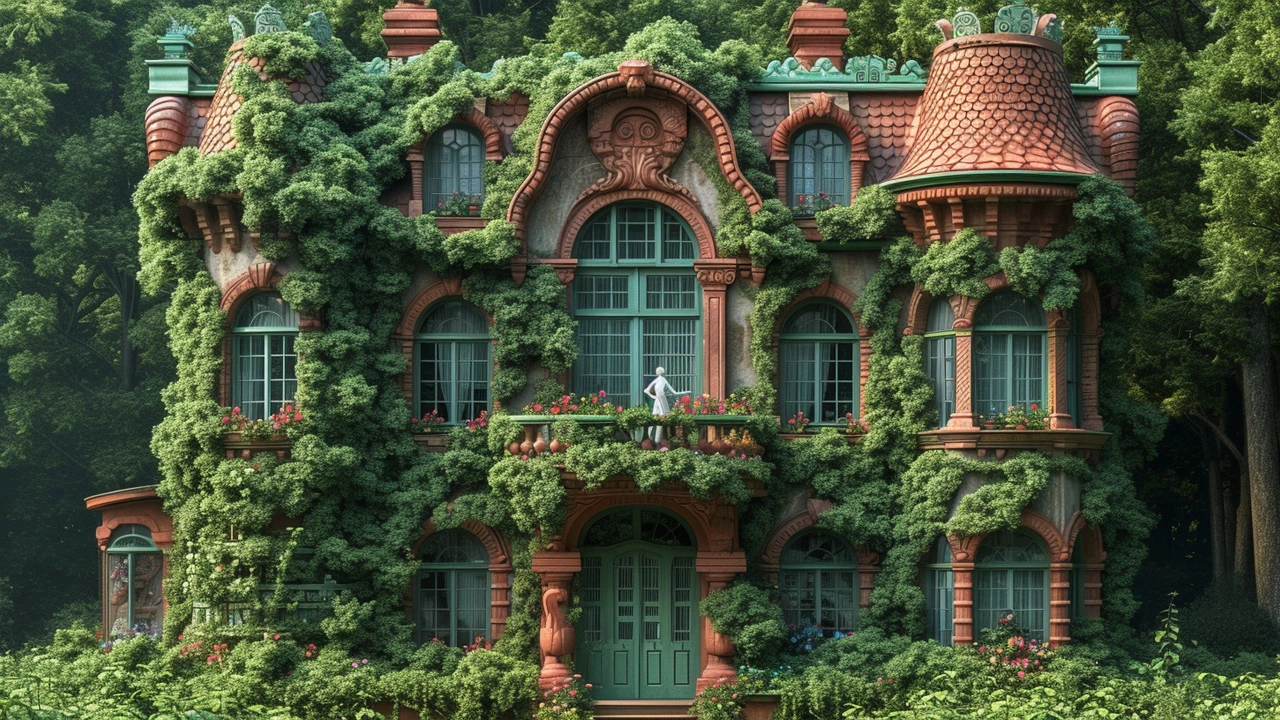Art Nouveau architecture: How to spot it and where to see it
Buildings that bend like vines or bloom like flowers—that’s Art Nouveau. It grew around 1890–1910 as a reaction to cold, rigid designs. Architects and designers wanted buildings to feel alive. The result: facades, doors, furniture and fixtures that share the same organic look.
Key features to look for
Start by checking lines. Art Nouveau favors long, flowing curves often called "whiplash" lines. Look at railings, window frames, and molding—if the shapes curve like stems or waves, that’s a strong sign. Nature motifs are everywhere: flowers, leaves, insects and shells show up in stone, ironwork, stained glass and tiles.
Materials mix freely. You'll see cast iron for balconies and railings, glass for colorful windows and skylights, and mosaic or glazed tiles on walls and entrances. Interiors often match exteriors: light fixtures, staircases and furniture were designed to form a complete visual whole, not random add-ons.
Notice how windows and doors are framed. They often avoid perfect rectangles and prefer rounded corners or elongated shapes. Details are handcrafted: look for forged iron patterns, ceramic panels with painted scenes, and painted or inlaid wooden furniture that follows the same curves as the building.
Where to see Art Nouveau
Want to see good examples quickly? In Paris, spot Hector Guimard’s Metro entrances and houses with sinuous ironwork. Brussels is a must for Victor Horta’s townhouses—Hôtel Tassel is a classic. Barcelona shows a local twist with Antoni Gaudí’s flowing facades at Casa Batlló and Casa Milà. Riga has one of the largest collections of Art Nouveau façades in Europe, full of floral and figurative ornament. Vienna’s Secession buildings and Budapest’s decorative apartment blocks also show the style’s local flavors.
Not every curved building is Art Nouveau, but if multiple design elements repeat—curves, nature motifs, integrated interiors—you’re likely looking at the real thing. Walking tours in these cities often point out small details that stand out only when you know what to watch for.
Want a quick ID trick? Check balconies and entrances first. They’re cheap to view from the street and often contain signature ironwork or tile panels. If a building has matching interior details—stair rails, lamps, or stained glass—it’s almost certainly made in the Art Nouveau spirit.
Thinking of bringing the look home? Add curved iron railings, a stained-glass window panel, or a few mosaic tiles by the entry. You don’t need a full renovation: one or two crafted pieces can give a modern space a clear Art Nouveau vibe without feeling dated.
Art Nouveau feels personal because it focuses on craft and detail. Once you learn a few visual cues, the style starts to pop out on city streets, subway stops and even in old apartment doorways. Keep your eyes open—these details are the real reward.

Exploring the Elegance of Art Nouveau Architecture: A Historical Design Revolution
Hey there, folks! Have you ever marveled at the sweeping curves and elaborate designs of Art Nouveau architecture? It's like a visual symphony, full of life and movement! Let me take you on a trip through the past where we'll discover how this extraordinary style took the world by storm, transforming cities with its organic lines and decorative elements. We'll see the intricate details that give these buildings character and how this revolutionary movement left its imprint in the world of design. Stick around, and let's appreciate the beauty and creativity of Art Nouveau together!
Read more
Art Nouveau Architecture: A Tribute to Artistic Genius
As a passionate design aficionado, I’ve spent countless blissful moments celebrating the beauty and genius of Art Nouveau Architecture. This post is a tribute to the creative minds who used their artistic genius to craft buildings that are not just structures, but picturesque works of art. Get ready to journey through time as I explore some of the most notable architects and their contributions to the iconic era of Art Nouveau. Together, let's appreciate the innovation and intricate details of these architectural masterpieces that continue to captivate us today.
Read more
Understanding the Intricacies of Art Nouveau Architecture
Delve into an enriching exploration of Art Nouveau architecture through this blog post. You'll unravel the intricate details, illuminating the unique features and historical significance of this exquisite architectural style. This insightful post will not only enhance your understanding but will also arouse your appreciation for the nuanced facets of Art Nouveau. So, come along on this architectural adventure, where we'll unearth the magic behind these timeless designs.
Read more